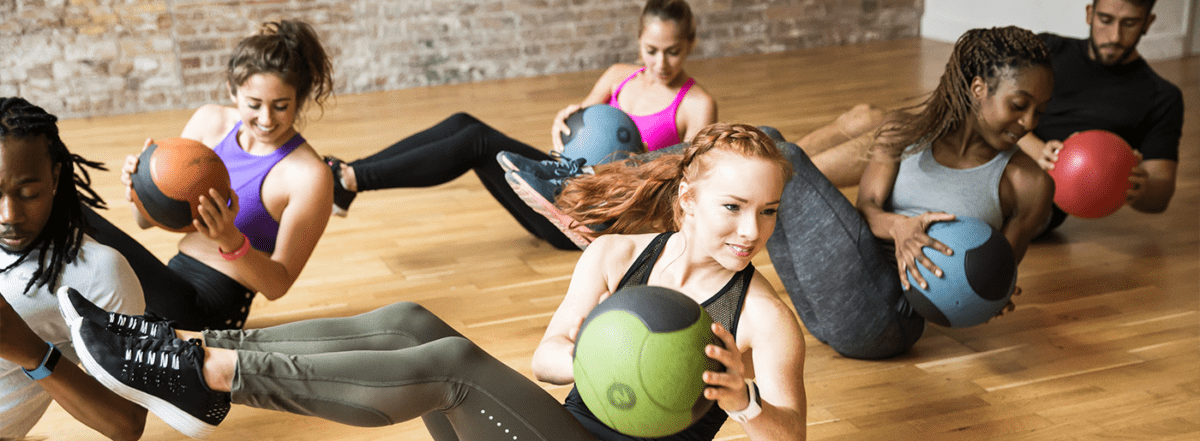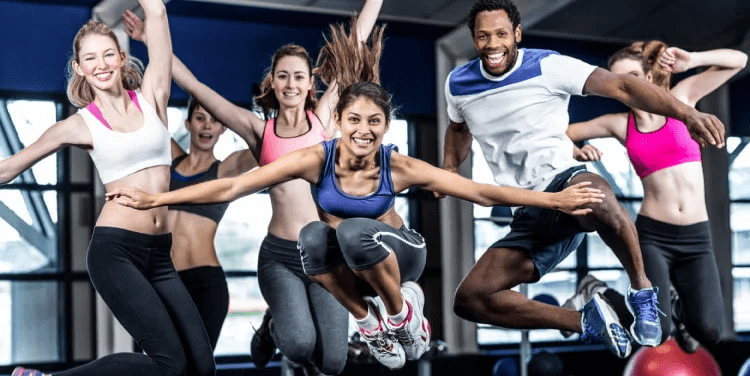Workout classes offer individuals a structured and motivating environment to engage in physical activity while benefiting from professional guidance and peer support.
These classes come in a variety of formats, catering to diverse fitness goals, preferences, and skill levels. Whether you’re a seasoned gym-goer or a newcomer to exercise, there’s likely a workout class suited to your needs and interests.
One of the primary advantages of workout classes is the expertise of instructors who lead them. These professionals possess certifications and training in exercise science, physiology, and often specialized areas such as yoga, Pilates, or high-intensity interval training (HIIT).
Their knowledge enables them to design safe and effective workouts, offer personalized modifications, and provide valuable feedback on technique. For instance, in a yoga class, an instructor might guide students through proper alignment in poses to prevent injury and maximize benefits.
Moreover, the social aspect of workout classes can enhance motivation and accountability. Exercising alongside others with similar goals fosters a sense of camaraderie and friendly competition, which can inspire participants to push themselves further.
Imagine attending a spin class where the energy of the group propels everyone to pedal harder, or a boot camp where teammates cheer each other on during challenging circuits. These shared experiences not only make workouts more enjoyable but also increase adherence to an exercise routine.
Variety is another key aspect of workout classes that keeps participants engaged and prevents boredom. From dance-based cardio sessions like Zumba to strength-focused classes like CrossFit, there’s something for everyone.
Mixing up workouts not only targets different muscle groups but also challenges the body in new ways, leading to better overall fitness gains. For instance, a person might complement their regular running routine with a weekly barre class to improve flexibility and core strength.
Additionally, workout classes often provide structured progression, allowing individuals to track their fitness improvements over time. Many programs offer beginner, intermediate, and advanced levels, enabling participants to gradually increase intensity and difficulty as they build strength and endurance.
This structured approach ensures that individuals continue to see results and avoid plateaus in their fitness journey.
The convenience of scheduled class times can help individuals overcome barriers to exercise such as lack of motivation or uncertainty about what to do at the gym. Knowing that a class is happening at a specific time provides a sense of accountability and helps establish a consistent workout routine.
Plus, the variety of class times throughout the day accommodates different schedules, making it easier for people to prioritize fitness amidst busy lifestyles.
Read Also 5 things you must do if you want to be healthy
Some Specific Examples of Popular Workout Classes

1. Spin Class: Spin classes, also known as indoor cycling, simulate outdoor biking experiences in a studio setting. Led by energetic instructors, participants pedal through various terrains and intensities while listening to upbeat music.
Spin classes are excellent for cardiovascular health, leg strength, and calorie burning. They often incorporate interval training, where riders alternate between high-intensity sprints and recovery periods.
2. Yoga Class: Yoga offers a holistic approach to fitness, combining physical postures (asanas), breathing techniques (pranayama), and meditation. Yoga classes come in various styles, such as Vinyasa, Hatha, and Bikram, each focusing on different aspects of flexibility, strength, and relaxation.
Yoga is renowned for its benefits in improving flexibility, balance, and stress management.
3. HIIT Class: High-Intensity Interval Training (HIIT) involves short bursts of intense exercise followed by brief rest periods. HIIT classes typically include a mix of cardio and strength exercises performed at maximum effort, making them efficient for calorie burning and improving both aerobic and anaerobic fitness.
Examples include Tabata, Circuit Training, and CrossFit.
4. Barre Class: Barre workouts combine elements of ballet, Pilates, and yoga to sculpt and tone muscles, particularly in the legs, core, and arms. Using a ballet barre for support, participants perform small, isometric movements and targeted exercises to fatigue muscles and improve posture and flexibility.
Barre classes are low-impact and suitable for all fitness levels.
5. Boot Camp: Boot camp classes offer a total-body workout incorporating a mix of cardio, strength, and agility exercises inspired by military training. Participants engage in drills, circuits, and team challenges to improve cardiovascular endurance, muscular strength, and overall fitness. Boot camp classes often foster a sense of camaraderie and motivation through teamwork.
6. Pilates Class: Pilates focuses on core strength, stability, and alignment through controlled movements performed on a mat or specialized equipment such as a reformer. Pilates classes emphasize proper breathing techniques and mindful movement to improve posture, flexibility, and functional movement patterns. Pilates is suitable for individuals of all ages and fitness levels.

7. Dance Fitness Classes: Dance-based fitness classes like Zumba, hip-hop, or salsa provide a fun and dynamic way to get in shape while grooving to upbeat music. These classes often blend cardio exercises with choreographed dance routines, offering a full-body workout that improves cardiovascular health, coordination, and rhythm. Dance fitness classes cater to all skill levels and are especially appealing to those who enjoy moving to the music.
8. Mind-Body Classes: Mind-body classes such as Tai Chi, Qi Gong, or mindfulness meditation focus on cultivating a connection between the mind and body while promoting relaxation and stress reduction.
These classes emphasize slow, deliberate movements, deep breathing, and mental focus, fostering a sense of calmness and inner balance. Mind-body practices can improve flexibility, balance, and mental clarity, making them beneficial for overall well-being.
9. Aqua Fitness Classes: Aqua fitness classes take place in the water and offer a low-impact yet effective workout suitable for individuals of all ages and fitness levels. Exercises in the water provide resistance while minimizing stress on the joints, making them ideal for rehabilitation, injury prevention, and improving cardiovascular fitness. Aqua aerobics, water Zumba, and aqua cycling are popular variations of water-based workouts.
10. Functional Training Classes: Functional training classes focus on movements that mimic everyday activities and improve overall functional fitness. These classes incorporate exercises such as squats, lunges, pushing, pulling, and rotational movements to enhance strength, stability, and mobility. Functional training is particularly beneficial for improving performance in daily tasks, preventing injuries, and enhancing sports performance.
11. Mindfulness Walks or Hikes: Some fitness studios or organizations offer outdoor mindfulness walks or hikes, combining the physical benefits of walking or hiking with mindfulness practices such as guided meditation or nature appreciation.
These experiences promote mental relaxation, stress reduction, and a deeper connection with the natural environment, fostering both physical and mental well-being.
12. Senior Fitness Classes: Tailored specifically for older adults, senior fitness classes focus on improving strength, flexibility, balance, and cardiovascular health while considering age-related considerations and mobility limitations.
These classes often incorporate chair exercises, gentle stretching, resistance training, and low-impact cardio to support healthy aging and maintain functional independence.
13. Circuit Training Classes: Circuit training involves moving through a series of different exercises or stations in a structured circuit format, with minimal rest in between. These classes typically combine strength training exercises with cardiovascular movements to provide a comprehensive full-body workout.
Participants rotate between stations, targeting various muscle groups and keeping the heart rate elevated for improved endurance and calorie burning. Circuit training classes are adaptable to different fitness levels, as individuals can adjust the intensity and resistance based on their abilities.
14. Mindful Movement Classes: Mindful movement classes, such as Feldenkrais or Alexander Technique, focus on increasing body awareness, improving movement efficiency, and reducing tension and stress.
These classes emphasize gentle, mindful movements and breathwork to enhance mobility, alignment, and relaxation. Participants learn to move with greater ease and fluidity while releasing muscular tension and promoting mental clarity and emotional well-being.
15. Kickboxing or Martial Arts Classes: Kickboxing and martial arts classes offer a dynamic and high-energy workout that combines martial arts techniques with cardio and strength training exercises.
Participants learn striking techniques, kicks, punches, and defensive moves while engaging in intense cardio drills and conditioning exercises. These classes improve cardiovascular fitness, coordination, agility, and self-defense skills, making them both physically and mentally challenging.
16. Recovery and Regeneration Classes: Recovery and regeneration classes focus on promoting recovery, flexibility, and mobility through gentle stretching, foam rolling, myofascial release, and relaxation techniques.
These classes help alleviate muscle soreness, improve flexibility, and prevent injuries by releasing tension, improving circulation, and restoring optimal muscle function. Participants leave feeling rejuvenated, relaxed, and ready to tackle their next workout with renewed energy and mobility.
17. Specialty Classes: Many fitness facilities offer specialty classes that cater to specific interests or goals, such as prenatal or postnatal fitness, core conditioning, sports-specific training, or outdoor adventure workouts.
These classes provide targeted instruction and exercises tailored to the unique needs and preferences of participants, whether they’re preparing for childbirth, focusing on core strength and stability, or training for a specific sport or outdoor activity.
Specialty classes offer a supportive environment and expert guidance to help individuals achieve their goals safely and effectively.
By exploring these examples, individuals can find the workout classes that best align with their preferences, goals, and fitness levels. Whether it’s the high-energy atmosphere of a spin class or the mindful practice of yoga, the diversity of workout classes ensures that there’s something for everyone seeking to improve their health and well-being.
Read Also Practical Steps to Convert Plastic Bottles Wastes into Carpet
